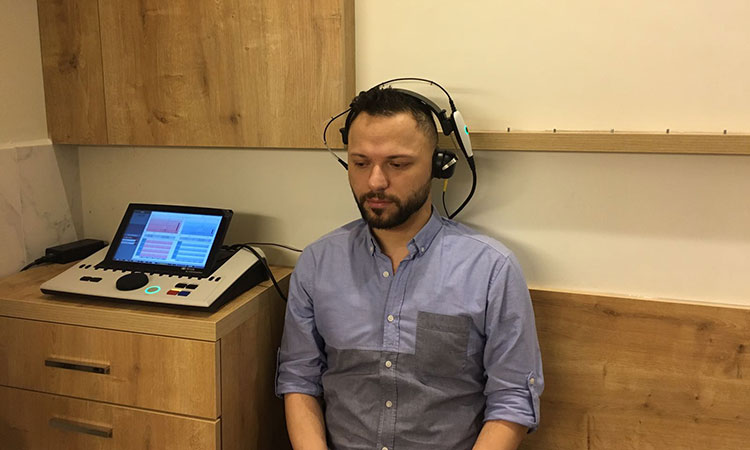It is a graphical reflection of the relationship between air pressure in the ear canal and the movement of the eardrum or tympanic membrane and the small bones in the air-filled middle ear cavity. Dec. In this test, Tympanometry, Acoustic Reflex Test and Eustachian Dysfunction Tests can be performed.
Normal Results;
There is no fluid in the middle ear.
The eardrum looks smooth.
There is normal pressure in the middle ear.
There is a normal movement of the eardrum and conduction bones (auditory bones).
Abnormal Results;
Fluid in the middle ear
Eardrum puncture
Scarring of the tympanic membrane (usually from frequent ear infections)
Middle ear pressure is beyond the normal December
Tumors in the middle ear
Earplugs block the eardrum
Lack of contact between the conduction bones of the middle ear Decussation
Type A: Normal middle ear pressure.
Type As (stiffness)-Flattened A: Giving a peak in the normal pressure area, but the static elasticity value is 0. the one below 35 cc is the tympanogram. Otosclerosis, bone chain fixation and middle ear effusions are typical findings.
Type Ad (deep)-Deep A: Giving a peak in the normal pressure area, but the static elasticity value is 1. it is a tympanogram that is over 30 cc. It is a typical finding of bone chain breaks and flaccid eardrums.
Type B: Not giving obvious peak (static elasticity 0. less than 10 cc) is a tympanogram. Serosis is a typical finding of otit. It has the shape of a straight curve without a vertex. It is characteristic in middle ear effusions. It is observed in buns that close the eardrum and eardrum perforations that close the eardrum.
Type C: It is a tympanogram that gives a peak in the negative pressure area, static elasticity values may vary (may be normal or low amplitude). If the static flexibility values are within normal limits, the tympanogram finding is more correlated with Eustachian disorders.
Acoustic Reflex: The response of the stapes November to acoustic stimuli is called acoustic reflex or stapes reflex. In humans, sounds with a intensity higher than 70 dB trigger the stapes November reflex, causing the stapes November contraction.
The acoustic reflex is received in both ears no matter which ear is stimulated. Giving a stimulus to one ear and measuring the reflex in that ear is called the ipsilateral reflex, giving a stimulus to one ear and measuring the reflex in the opposite ear is called the contralateral reflex.

